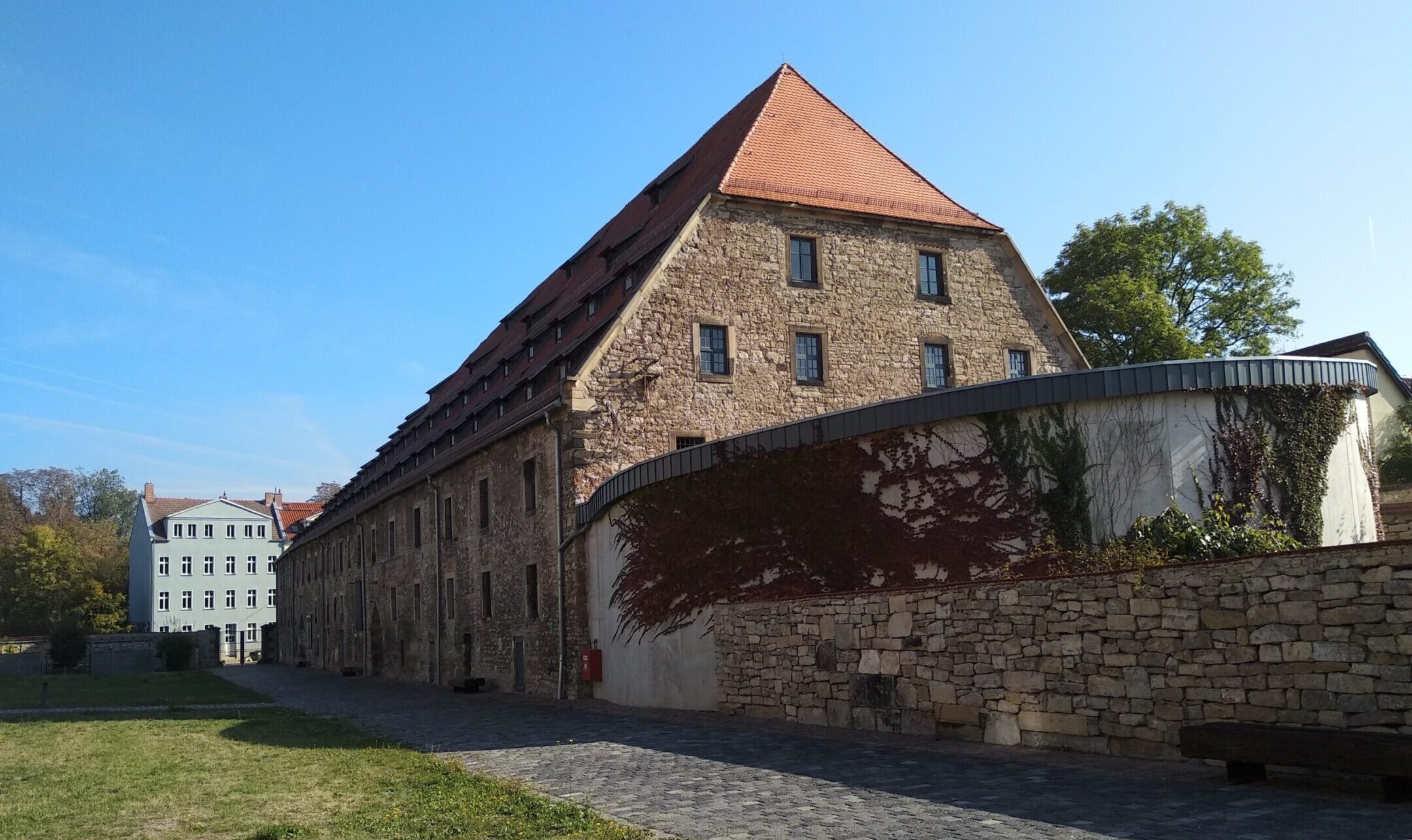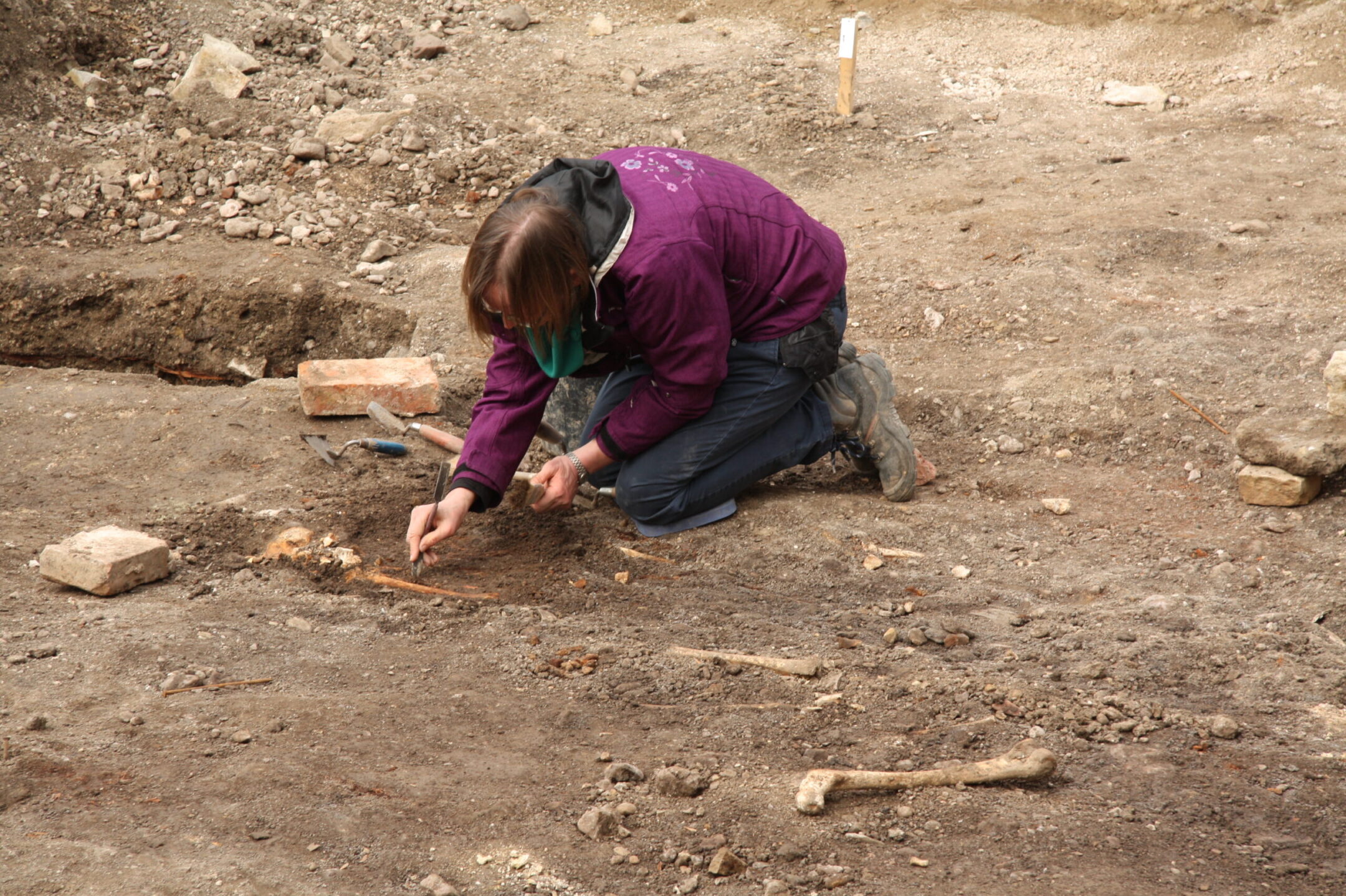A German town built a granary atop its Jewish cemetery. Now the bones are yielding insights about Ashkenazi DNA.
Erfurt’s medieval Jews carried many of the same diseases associated with Ashkenazi Jews today

Researchers analyzed bodies found in the Jewish cemetery of Erfurt, upon which a granary was built in the 15th century. (Shai Carmi)
BERLIN (JTA) – The city of Erfurt in central Germany is home to an impeccably restored medieval synagogue made possible because local Jews had been expelled long before the Nazis began their campaign to destroy Jewish sites.
Now, Erfurt’s long-hidden Jewish past is again offering new insights — this time about the genetic history of Ashkenazi Jews.
Human remains from a medieval Jewish cemetery in Erfurt have allowed what researchers say is the largest ancient Jewish DNA study to date. Conducted without disinterring any remains, in keeping with Jewish law, the study published Wednesday in the scientific journal Cell found that Erfurt’s medieval Jewish community was more genetically diverse than their modern-day cousins, and carried many of the same Jewish genetic diseases — such as Tay Sachs and cystic fibrosis — that affect Ashkenazi Jews today.
“There have been many previous DNA studies, but not of Jews,” said geneticist Shai Carmi, a professor at the Hebrew University of Jerusalem, whose search for study material led him to an archaeological dig at the Jewish cemetery in Erfurt. He and his collaborators were able to analyze DNA of 33 individuals who died between 1270 and 1400, using teeth they found there.
The study follows a similar analysis revealed in August by researchers in England, who studied the DNA from skeletons found at the bottom of a medieval well and concluded that the remains were likely of victims of an antisemitic massacre in 1190. Analysis of six individuals prior to their identification as Jewish revealed that Ashkenazi Jews developed a unique genetic variation centuries earlier than realized.
The Erfurt analysis also includes samples from before the epidemic of Black Death that was until recently understood to have created the genetic “bottleneck” that created the genetic markers common among Ashkenazi Jews today.
Erfurt’s Jewish settlement existed from the 11th to 15th century, with a brief gap following a 1349 massacre perpetrated after the Jews were falsely blamed for causing the bubonic plague. Surviving Jews returned there, but after all Jews were expelled once and for all in 1454, the city built a granary on top of the Jewish cemetery.

In 2013, the city approved the repurposing of the unused granary into a parking lot. Because it was an historic site, a rescue excavation was initiated, overseen for the State of Thuringia by German archaeologist Karin Sczech.
Meanwhile, Carmi had been looking for Jewish cemeteries anywhere in the world “where we could analyze remains already excavated,” he told JTA in a telephone interview from Jerusalem. “I consulted historians and eventually reached the archeologist in Erfurt.” Fortunately, he said, “they still hadn’t reburied the remains.”
He approached Sczech, who later became a co-author of the new study. In 2018, with a supportive judgment from Rabbi Ze’ev Litke — an Israeli expert on genetics and Jewish law — and permission from Erfurt’s then-rabbi, Benjamin Kochan, work began to extract and analyze DNA from detached teeth found in the graves. (About 500 Jews live in Erfurt today, most of them having migrated from the former Soviet Union since 1990.)
American geneticist David Reich picked up the teeth and brought them back to the department of human evolutionary biology at Harvard University in Cambridge, Massachusetts, where drilling and DNA extraction took place.
While the skeletons were reburied, the teeth are still stored at the research institutes where they have been analyzed, in case scientists need to retest to verify the result.
The project provides an ethical basis for studies of ancient Jewish DNA, Carmi said. “Of course we couldn’t just go to a cemetery and dig and take out skeletons; this would be prohibited,” he said, referring to Jewish law prohibiting the removal of bones from where someone was buried.
But Litke opined that the study could be done, because the bones already had been disturbed for an unrelated reason. “He recommended using teeth, as the analysis does almost no damage,” Carmi said.
There are many motivations to study Jewish DNA: One can find lost relatives going back a few generations, and answer questions about Jewish origin of partners intending to marry. But the goal of Carmi’s team was “to fill the gaps in our understanding of Ashkenazi Jewish early history.”
There are several non-destructive ways to obtain DNA from human remains, said Carmi, who also works as a consultant to an Israeli firm that helps clients trace their genetic roots.
“You can take an almost microscopic slice of bone and extract DNA in a solution, or put the entire bone in a solution and extract the DNA without drilling, without disturbing the dead. This opens the way to doing studies even without teeth,” he added.
His team found that the Erfurt community appeared to fit into two genetically distinct groups, descending either from Middle Eastern or European populations. This genetic variability no longer exists, Carmi said.
At the same time, Carmi said, the analysis found remarkable continuity in the local community, as well. “One third of the Erfurt individuals descended from one woman through their maternal lines,” he said, adding that evidence suggested that she lived between 1,000 and 2,000 years ago.
In a press statement, geneticist Reich of Harvard said the work “also provides a template for how a co-analysis of modern and ancient DNA data can shed light on the past. Studies like this hold great promise not only for understanding Jewish history, but also that of any population.”
The research team, with more than 30 scientists, included Hebrew University’s Shamam Waldman, a doctoral student in Carmi’s group, who performed most of the data analysis.
This article originally appeared on JTA.org.
















